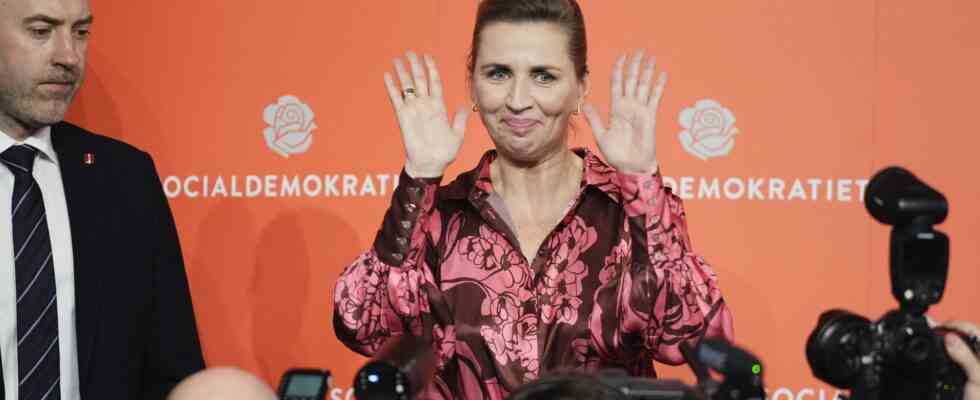Status: 02.11.2022 1:25 p.m
She won the parliamentary elections in Denmark. Nevertheless, Prime Minister Mette Frederiksen submitted her resignation. Because she now wants to put the governing coalition on a broader basis.
Despite her narrow victory in yesterday’s parliamentary elections in Denmark, Prime Minister Mette Frederiksen has submitted the resignation of her government. Danish media footage showed the social democrat arriving with Queen Margrethe II at Christiansborg Palace in Copenhagen and leaving shortly thereafter. The head of government did not give interviews.
In a round of talks with the heads of the other parliamentary parties, she then confirmed that she had submitted her application to resign. It is clear that the government cannot continue the work in its current form, she said. Frederiksen has led Denmark with a social democratic minority government since 2019, which has so far primarily relied on support from the left-wing camp in parliament.
Frederiksen aims for a broad alliance
With the resignation, Frederiksen is now clearing the way for a new so-called queen round. It will be examined who should lead the soundings on the formation of a new government. It is expected that Frederiksen will receive this order again.
She could then set about exploring the possibilities for a broad government across the political center, which is rare for Denmark. “If the Social Democrats say something, then we’ll stick to it,” said the 44-year-old, referring to her proposal made during the election campaign to lead a cross-camp government alliance. The Social Democrats are a “party for all of Denmark”. Frederiksen’s second option is to bet on the extremely thin majority.
Narrow election victory in Denmark: Prime Minister Frederiksen nevertheless resigns for the time being
Martin Polansky, ARD Stockholm, daily news at 12:00 p.m., November 2nd, 2022
Minimum majority at the last minute
In a dramatic election night, the centre-left coalition around Frederiksen’s Social Democrats received a minimal majority. Only after counting all the votes cast in the country did it become clear that the camp would still get the narrowest possible majority of 90 of the 179 seats. In mainland Denmark, Frederiksen’s “red bloc” got 87 seats, plus two seats won in Greenland and one in the Faroe Islands.
The alliance of liberals, conservatives and right-wing populists known as the “blue block” won a total of 73 seats in the elections. The Moderate Party of ex-Prime Minister Lars Lökke Rasmussen enters Parliament with 16 MPs for the first time.
Frederiksen’s Social Democrats are the clear winners of the election: 27.5 percent of the voters voted for the party, which alone gave them 50 seats in parliament in Copenhagen. Compared to the 2019 election, the party gained 1.6 percentage points. Frederiksen spoke of the “best result for social democracy in over 20 years”.
New elections instead of a vote of no confidence
Frederiksen had brought the election forward to avoid a vote of no confidence in her minority government by an allied party. The background was that Frederiksen had all breeding mink in Denmark culled at the end of 2020 for fear of a coronavirus mutation.
The order proved unlawful, leading to the resignation of a minister and a parliamentary inquiry. Rasmussen demands that Frederiksen investigate her role in the scandal.
Election in Denmark: Left camp wins narrowly
Arne Bartram, ARD Stockholm, currently Copenhagen, 2.11.2022 07:42 a.m

